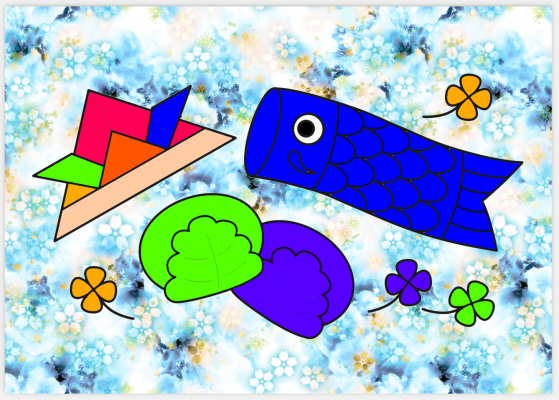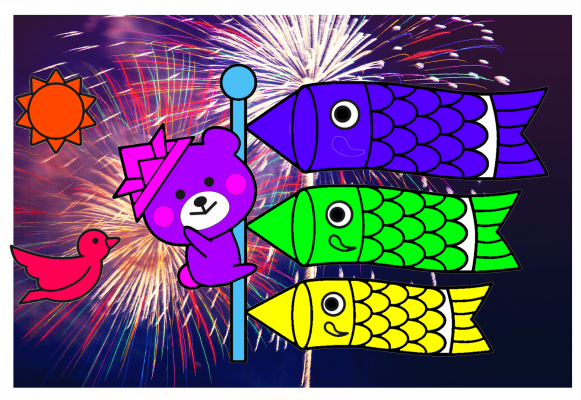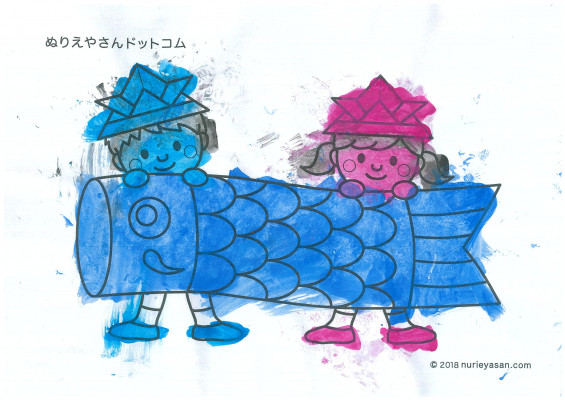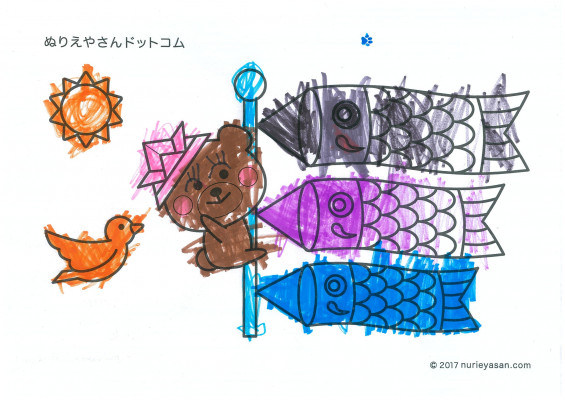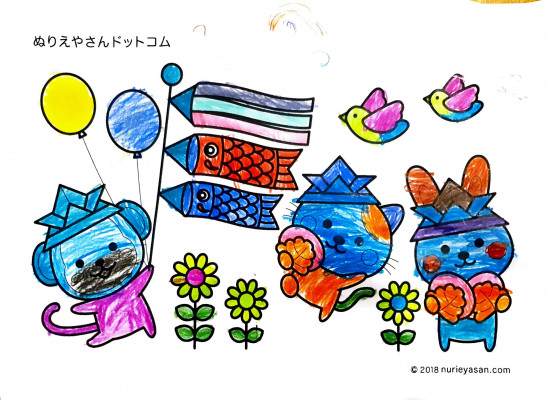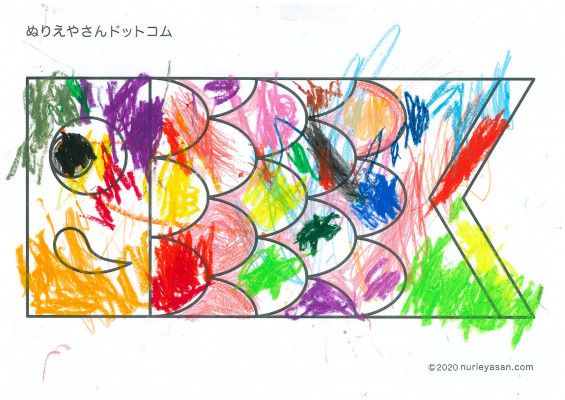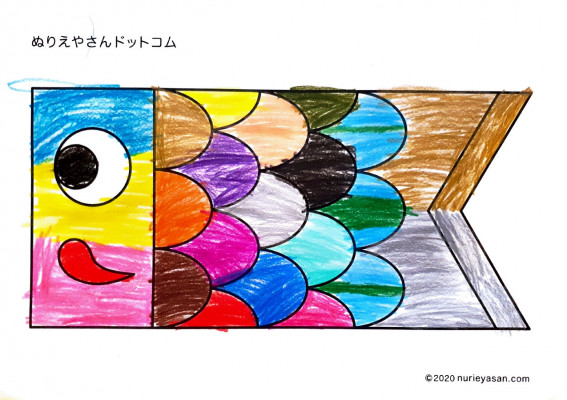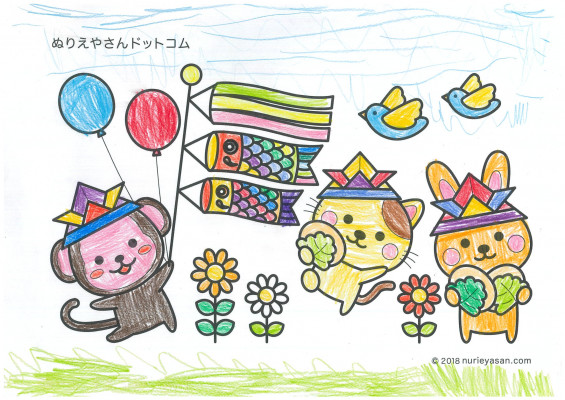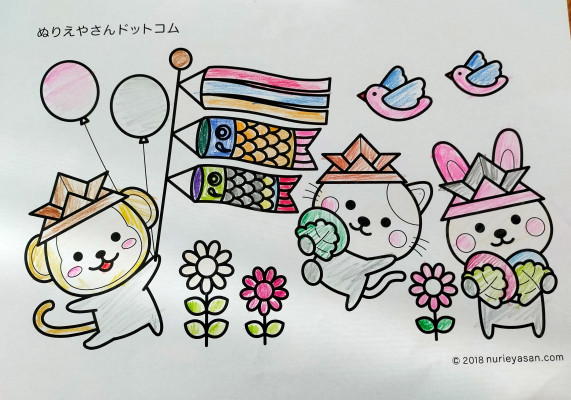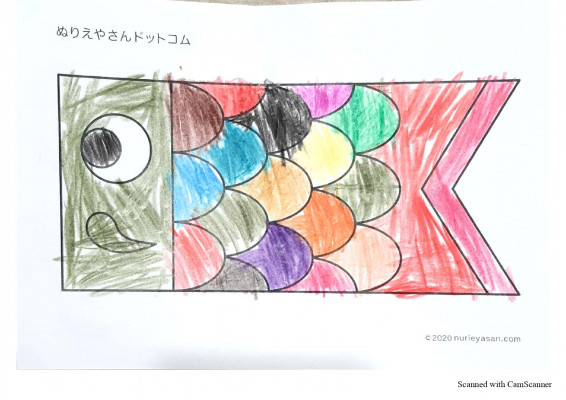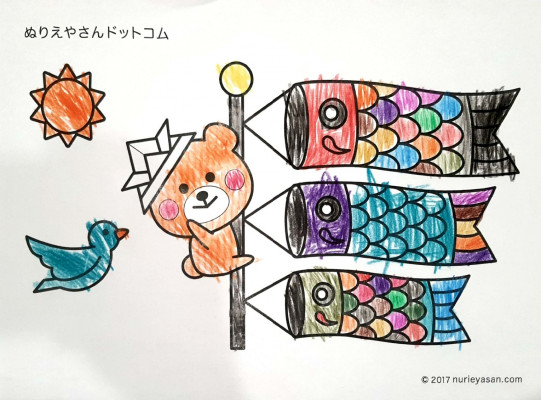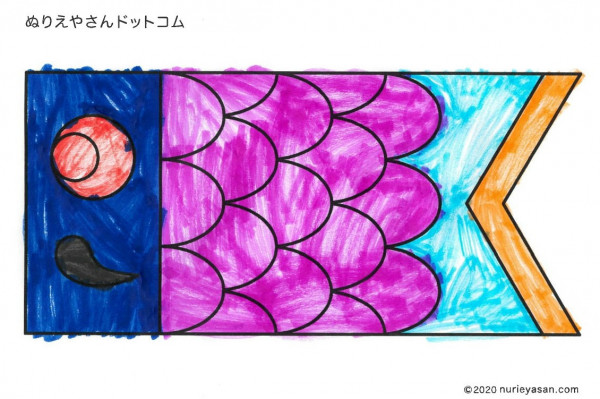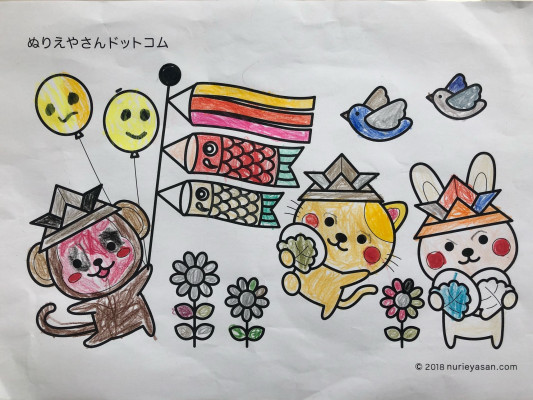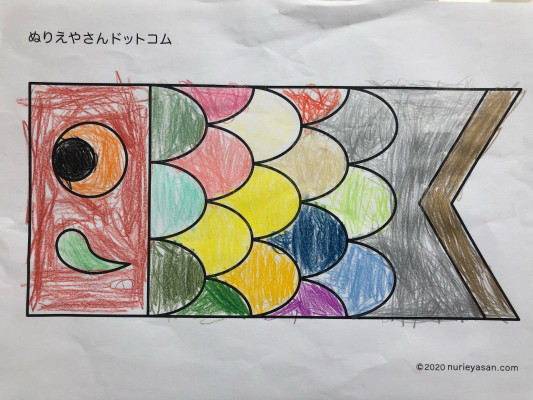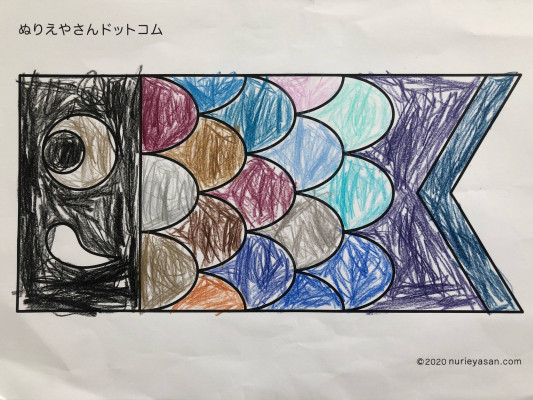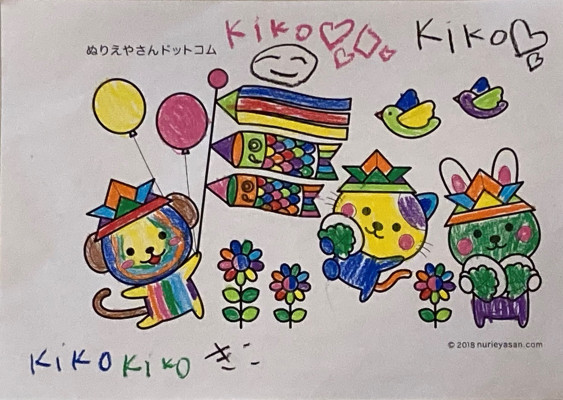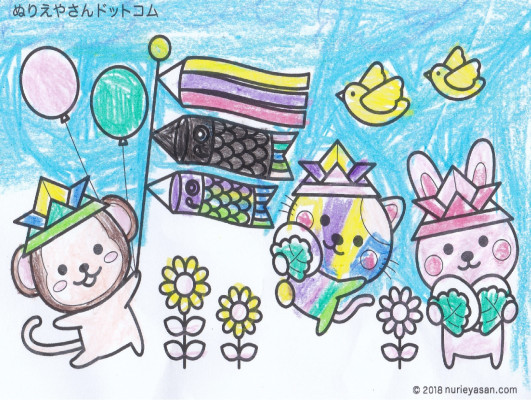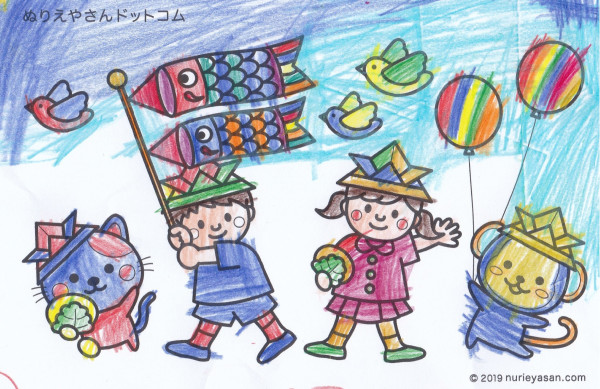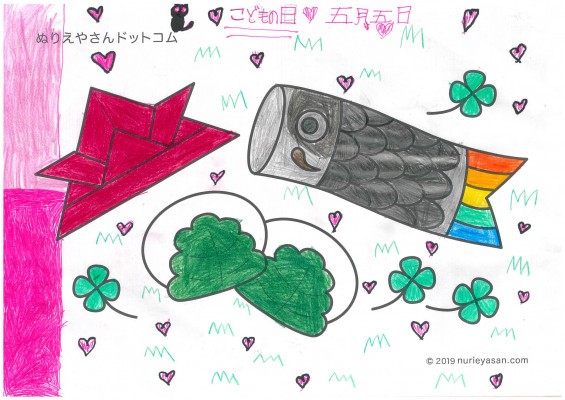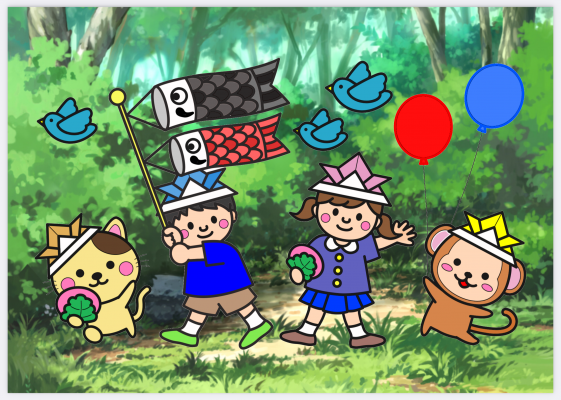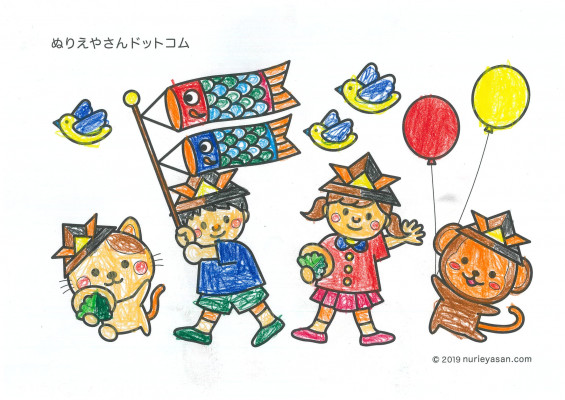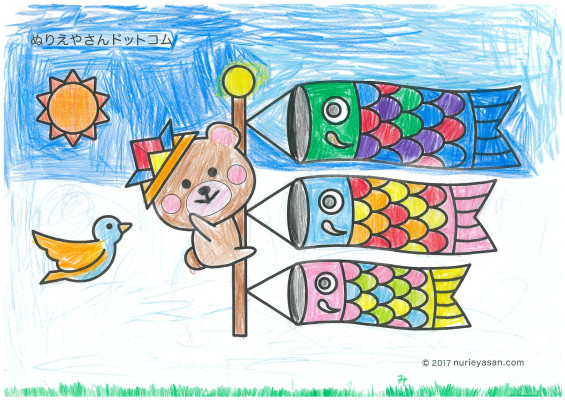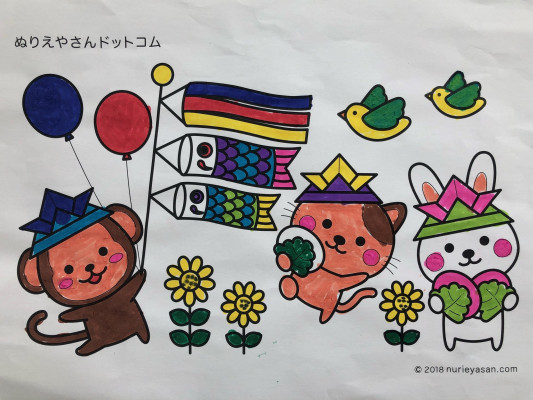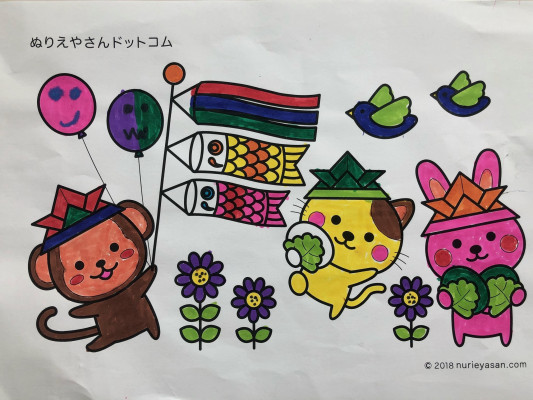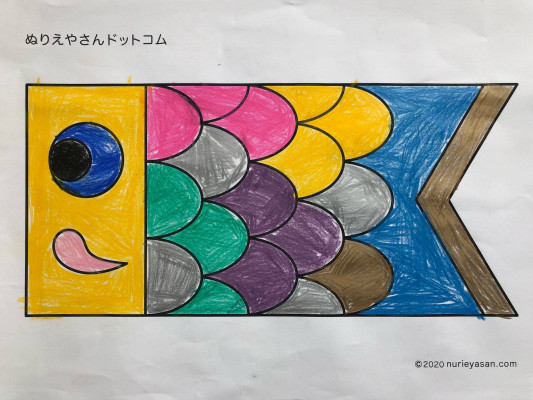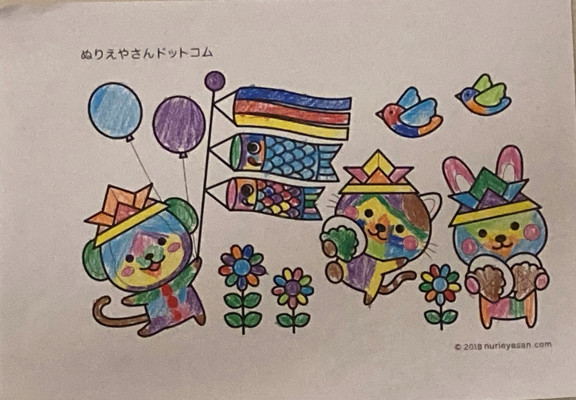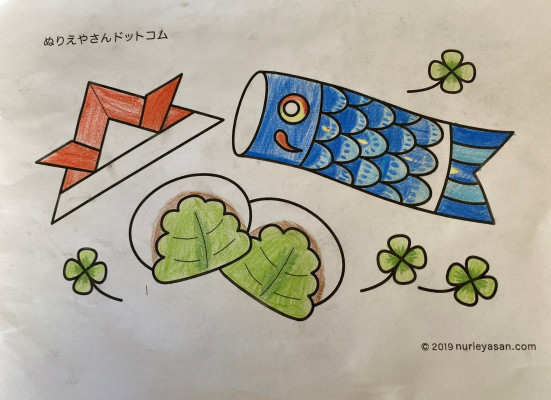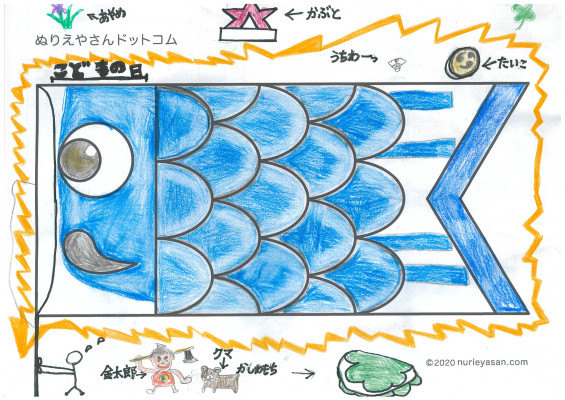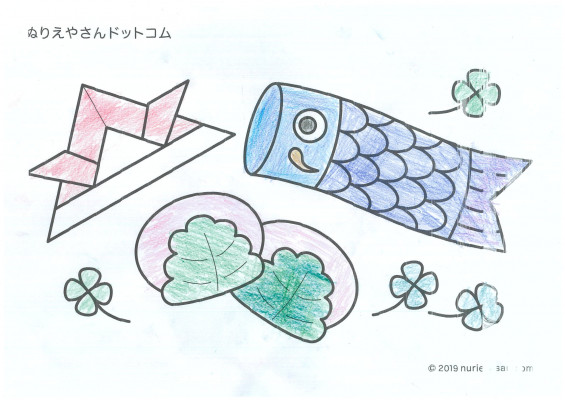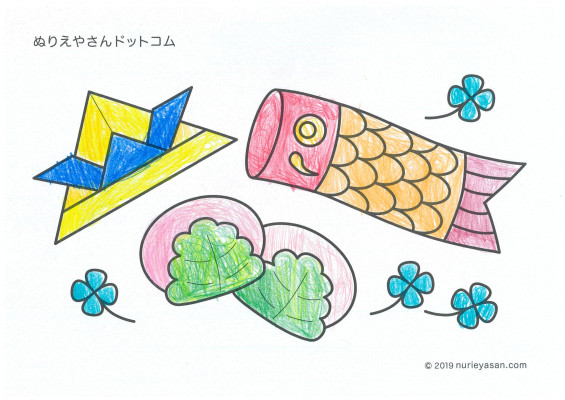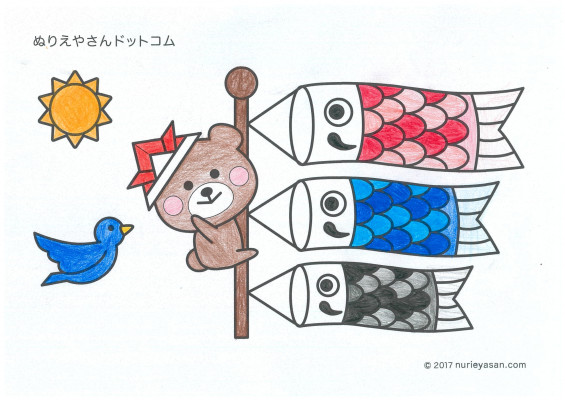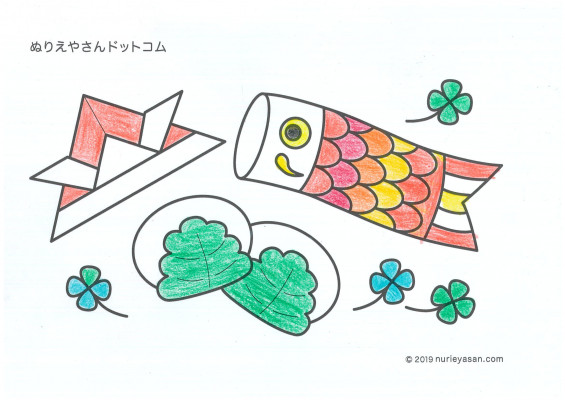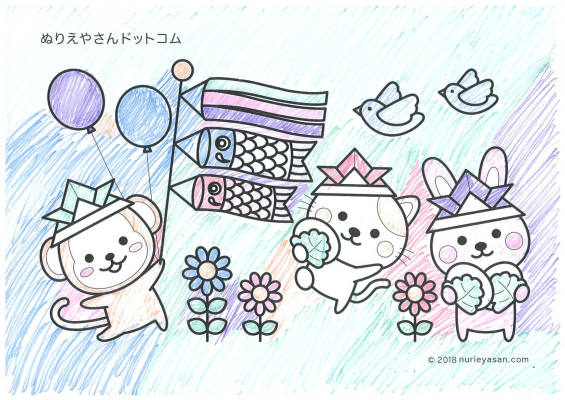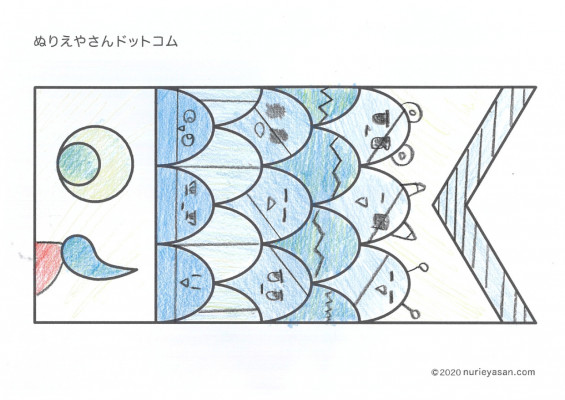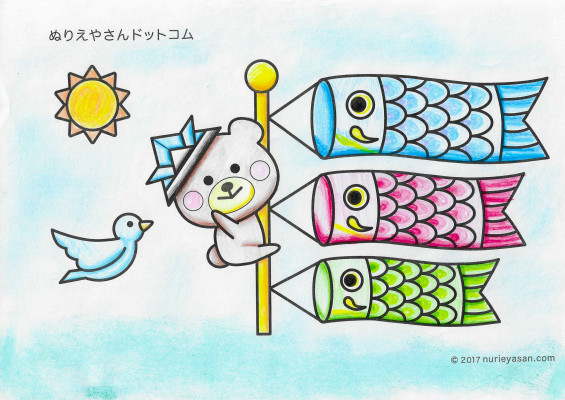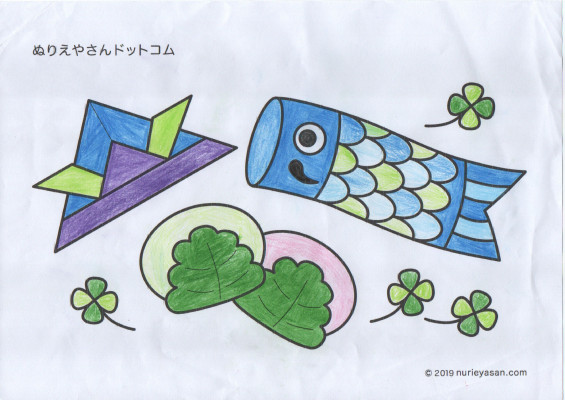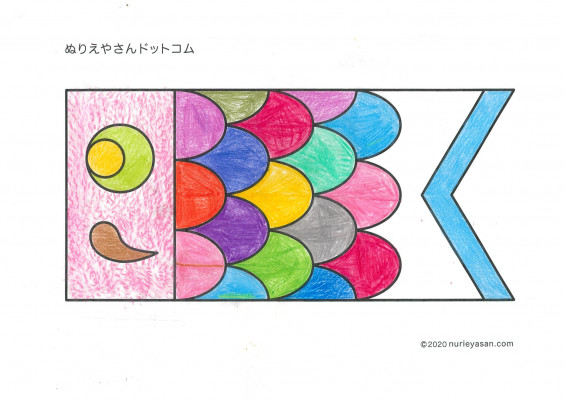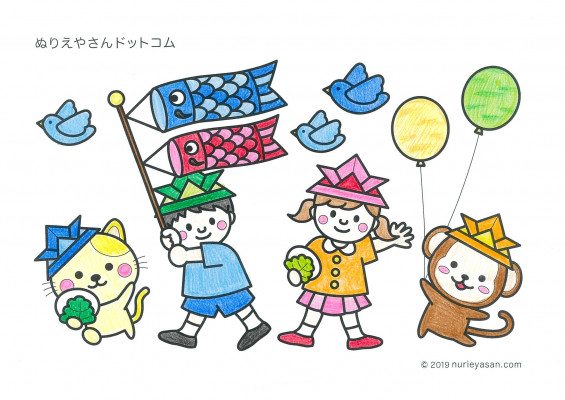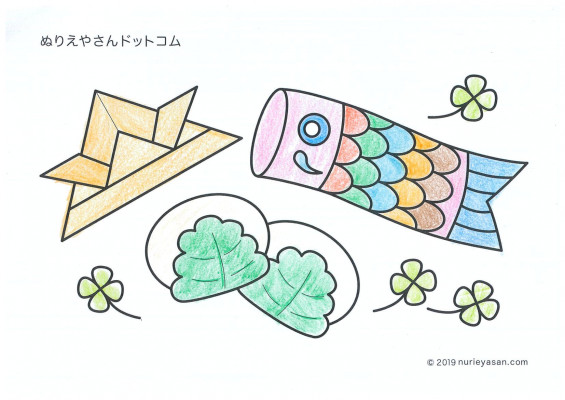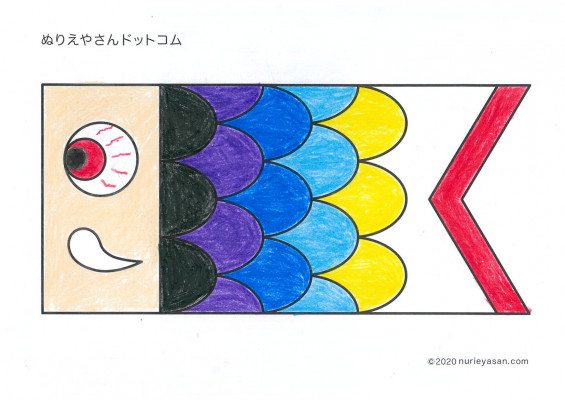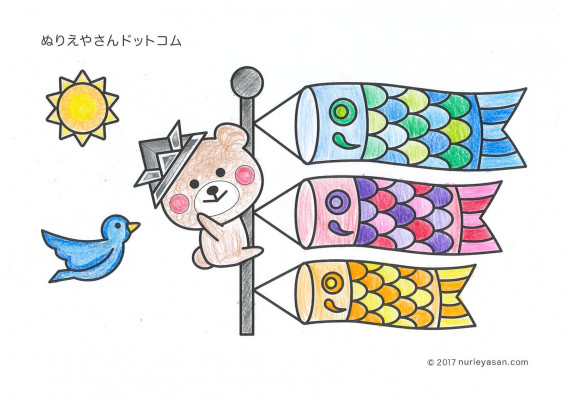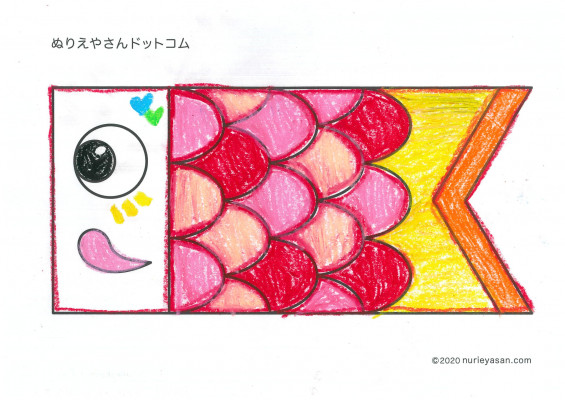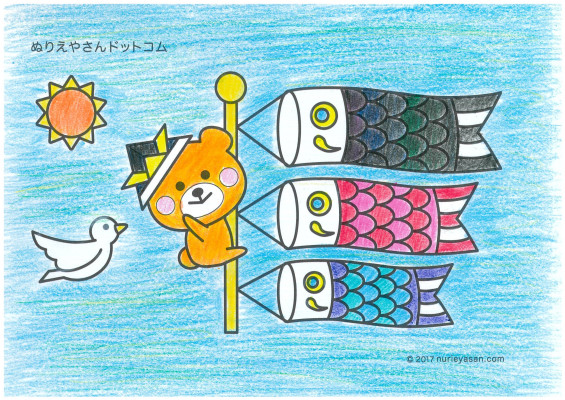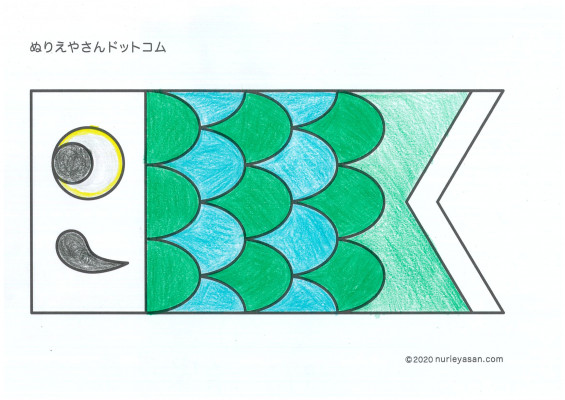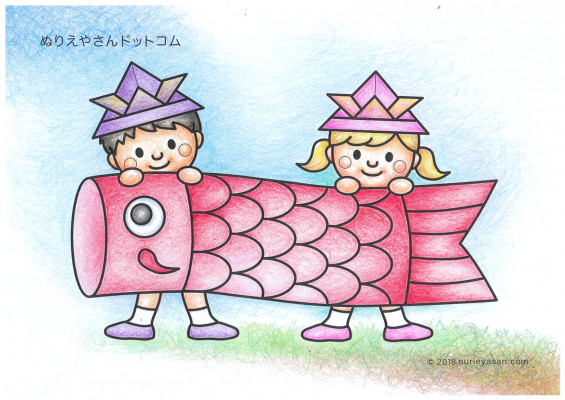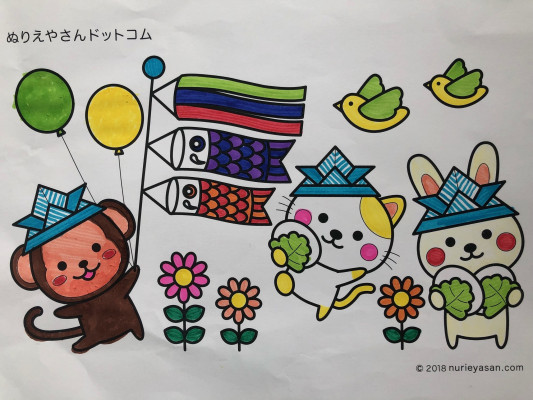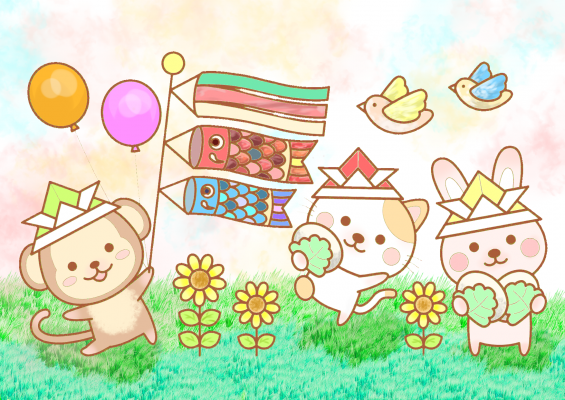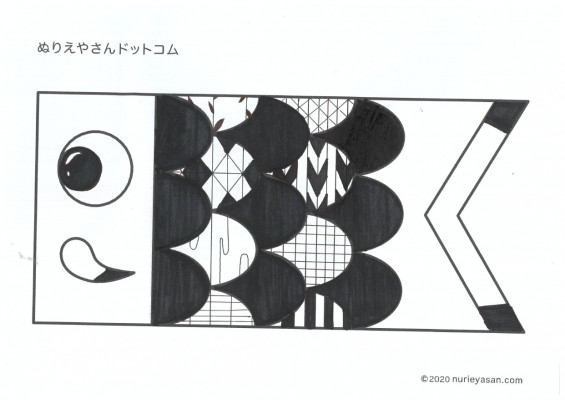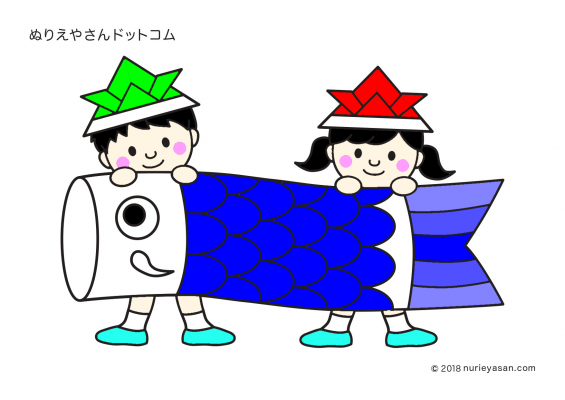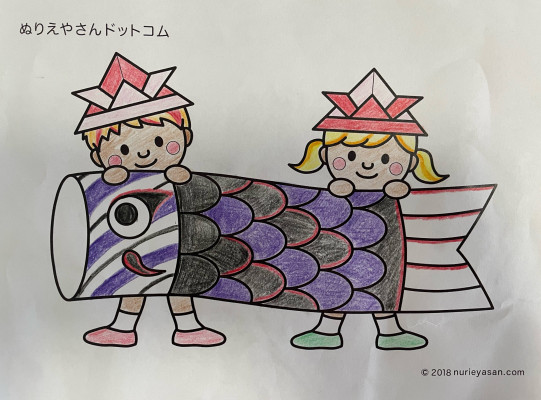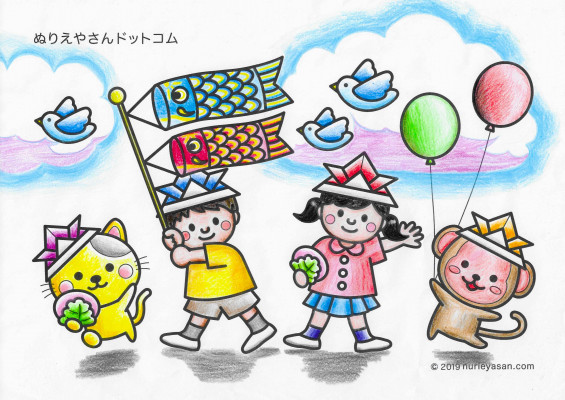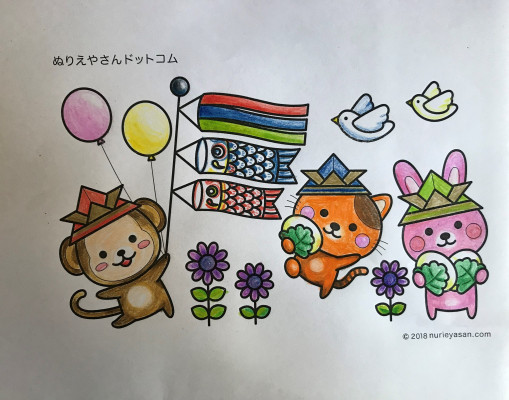
Children's Day Colouring Event
Thank you for your participation.
Colouring Works↓↓↓
①Kindergarten student and younger
②Lower grades of elementary school
③Upper grades of elementary school
④Junior high school students & above
What is Children's Day?
Is it a day to celebrate the healthy growth of boys?
How to celebrate "Tango no sekku"?
-
Decorate Koinobori (Carp Streamers)
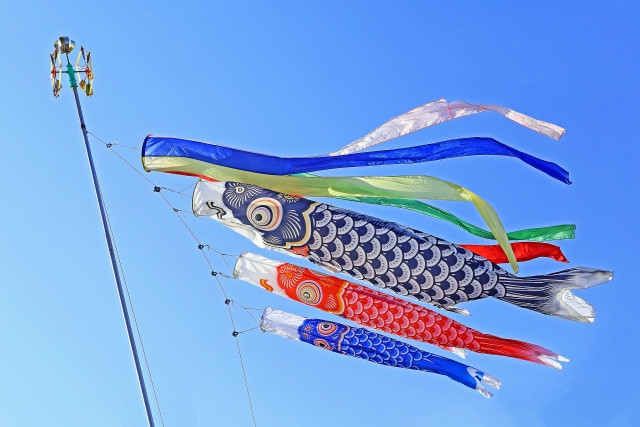 Koinobori is decorated in the hope of the healthy growth of children. It is a custom that began in the Edo period. Originally, it seems that the samurai started by decorating the entrance with banners and flags.
Koinobori is decorated in the hope of the healthy growth of children. It is a custom that began in the Edo period. Originally, it seems that the samurai started by decorating the entrance with banners and flags.
After that, many people also imitate it. They decorate the five-coloured streamers and carpe shaped streamers. It is believed that carps are symbol of success and healthy growth since carps are the known as the rising fish and chinese story said that "the carp that climbed the waterfall becomes a dragon"
- Decorate Gogatsu-ningyo (Warrior dolls)
 We will decorate Gogatsu-ningyo in the hope of the strong growth of the children. Models of Gogatsu-ningyo are Kintaro, Ushiwakamaru, Benkei, and Shoki.
We will decorate Gogatsu-ningyo in the hope of the strong growth of the children. Models of Gogatsu-ningyo are Kintaro, Ushiwakamaru, Benkei, and Shoki.
It is said that the Samurai helmets and armor are decorated if they were born in the samurai society of the Kamakura period. At that time, weapons such as helmets and armor were important tools for protecting oneself, and there was a tradition of dedicating them to shrines to pray for safety. Therefore, we are decorating helmets and armor to pray for a healthy life.
- The sweet flag bath
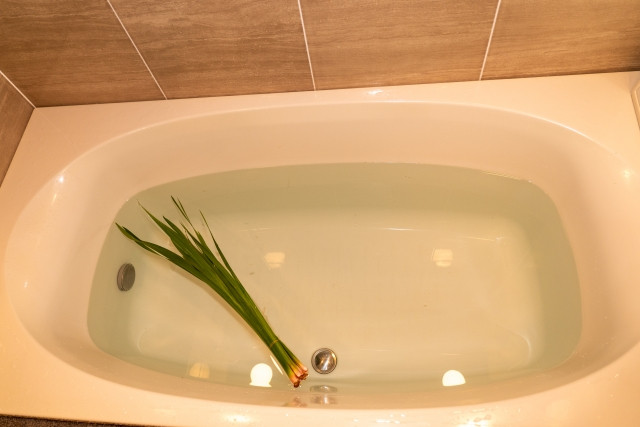 It is a custom from ancient China to use sweet flags. We hang it on the roof to protect it from evil.
It is a custom from ancient China to use sweet flags. We hang it on the roof to protect it from evil.
It is also said that if you take a sweet flag bath, you can survive the hot summer in good health.
- Eat Kashiwa mochi / Chimaki
There is a custom to eat Kashiwa mochi in the Kanto region and Chimaki in the Kansai region.
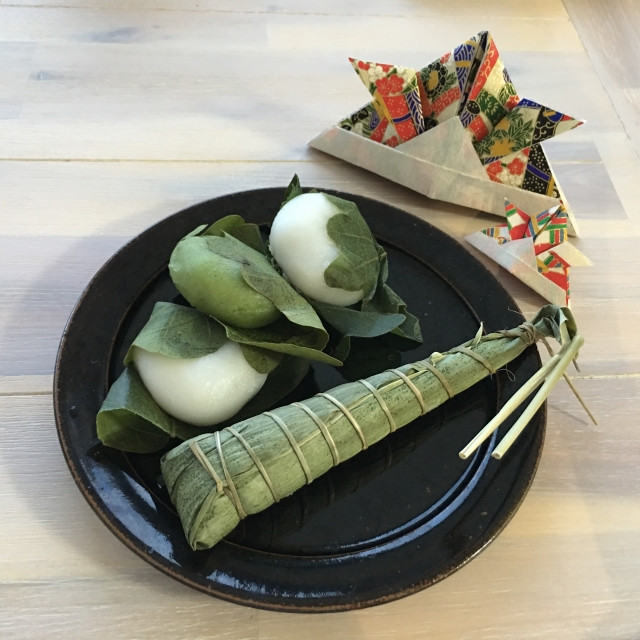 Kashiwa mochi
Kashiwa mochi
It is believed that Kashiwa-mochi is a symbol of "continuous family lineage" and "prosperity of descendants” because oak leaves don’t fall off from the tree until new sprouts come out in spring. It represents continuous cycle of life.
Chimaki
Chimaki has been introduced from China during the Heian period. Originally, we used the leaf called "Chigaya", which is thought to dispel evil spirits, but nowadays bamboo leaves are commonly used.



